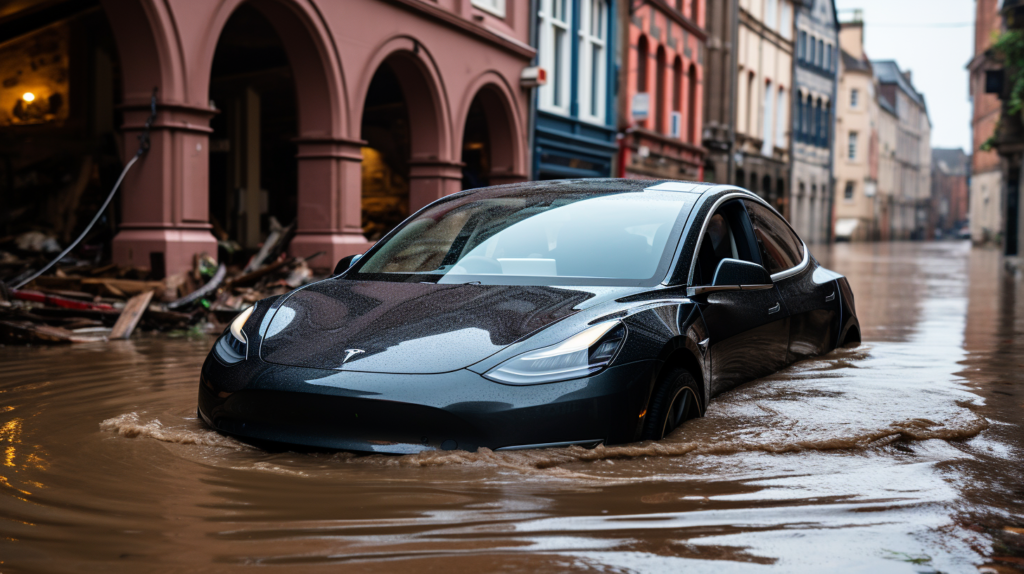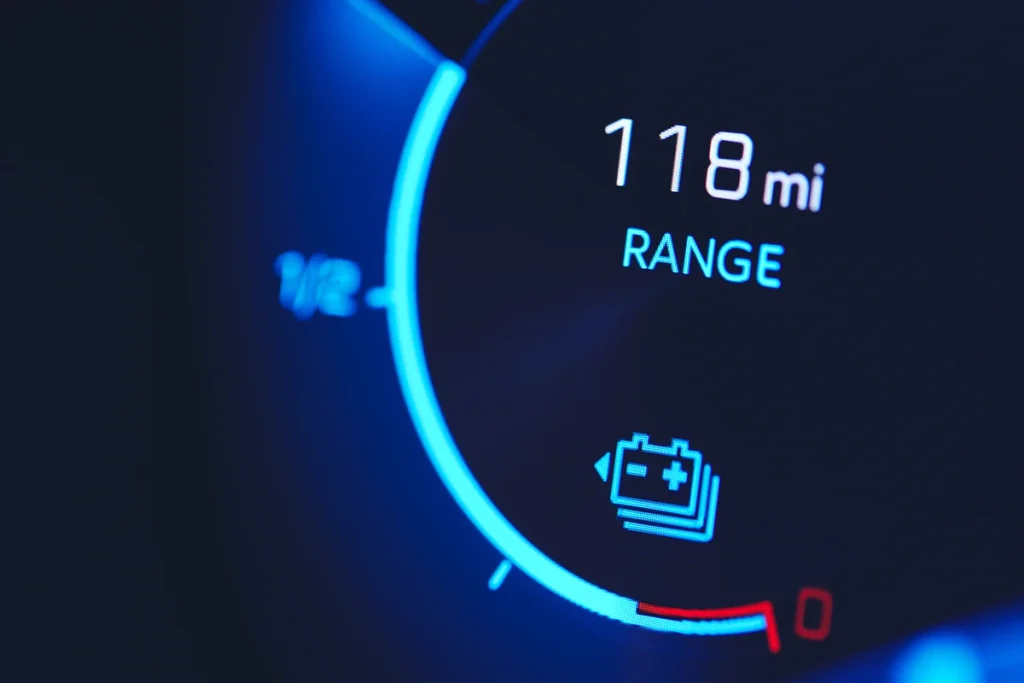Hurricane season in the United States not only brings the potential destruction of cars but now also poses an additional risk for electric vehicle (EV) owners. The recent Hurricane Idalia has highlighted the danger of saltwater exposure leading to lithium-ion battery fires in EVs.
According to CBS News, the floodwaters caused by Hurricane Idalia resulted in two Tesla vehicles catching fire in Dunedin, Florida, which is located about 20 miles north of St. Petersburg. This category four storm landed on Florida’s Gulf Coast last week, causing a three-foot surge in Tampa Bay. The flooding led to the rescue of around 75 individuals surrounding St. Petersburg.
The department issued a critical alert on Facebook for owners of hybrid or electric vehicles that have come into contact with saltwater due to recent floods within the last 24 hours. It urges these individuals to move their cars out of the garage promptly. Exposure to saltwater may trigger combustion in the lithium-ion batteries used in these vehicles. If possible, it is advised to relocate the vehicle to higher ground.
This caution extends to electric-powered golf carts, scooters, and bicycles utilizing lithium-ion batteries that could ignite when exposed to water. More pointedly, salt remnants can persist even after the water has evaporated, potentially forming ‘bridges’ between the battery cells. This could result in the creation of electrical connections, which can induce a fire.
Lithium-ion battery packs, containing a flammable liquid electrolyte inside a cluster of cells, form part of electric vehicles (EV) and plug-in hybrids. A CBS News Innovation Lab report reveals vehicles have around 1,000 times more cells than an e-bike. As a result, batteries with higher energy and more cells face a higher chance of failure.
In a circumstance in Pinellas County, Florida, a Tesla vehicle that had been underwater was being towed by firefighters when it suddenly ignited, according to Palm Harbor Fire Rescue training chief Jason Haynes, in a conversation with CBS MoneyWatch. Haynes explained that combustion can still take place long after a car has been introduced to saltwater and stressed the necessity of relocating possibly damaged cars away from garages and adjacent structures.
Tesla advises its car owners to be wary of the hazards associated with vehicle submersion and recommends not operating a car subjected to flooding. “Handle your car as though it were involved in a collision and reach out to your insurance provider,” the firm instructs in its guidelines for managing a drowned vehicle.
Incidents of fire associated with a waterlogged lithium-ion battery don’t necessarily occur right after exposure, thus emphasizing the need for a professional inspection of any vehicle that has been water-damaged.
“This process can take anywhere from a few days to several weeks,” reported Patrick Olsen, public relations officer for Carfax,
He pointed out that some electric vehicle owners fail to recognize the risks related to water damage. “I’ve heard electric car owners say, ‘My vehicle doesn’t have an engine that can get flooded, so I can move through high water.’ This is a misconception,” Olsen clarified.
Andrew Klock, who is in charge of electric vehicle education for firefighters at the National Fire Protection Association, clarified that electric vehicles do not pose more inherent risks than fuel-operated cars and trucks as long as all parties, including drivers and emergency personnel, are knowledgeable about handling flooding scenarios.
Firefighters may not understand how to extinguish a fire in an EV battery. “They often do not target the water correctly,” he mentioned, specifying that the required area for electric vehicles is underneath the chassis where the batteries are positioned.
He further added, “Failure to do this and continuously pouring water on top won’t necessarily ensure the water reaches the battery compartment.
The recent incidents of electric vehicle fires caused by saltwater exposure during Hurricane Idalia serve as a sobering reminder of the unique challenges posed by EVs in flood-prone areas. Owners of electric and hybrid vehicles must exercise caution and take immediate action if their vehicles come into contact with saltwater. Even after the waters recede, the risk of battery fires remains, underscoring the need for professional inspections and a better understanding of safety protocols among vehicle owners, emergency personnel, and the public at large.
While electric vehicles do not inherently pose greater risks than traditional vehicles, education and awareness are essential to ensuring the safe handling of these vehicles in flooding scenarios.


